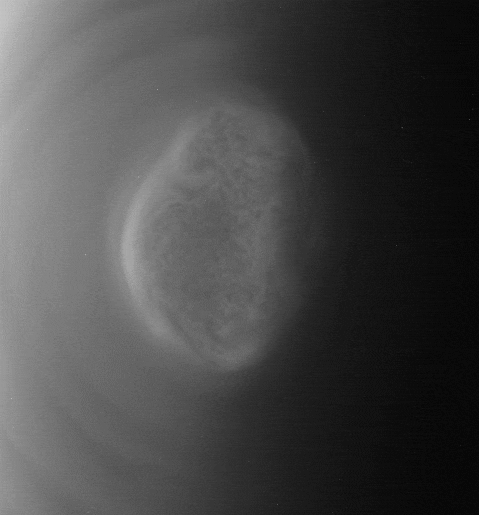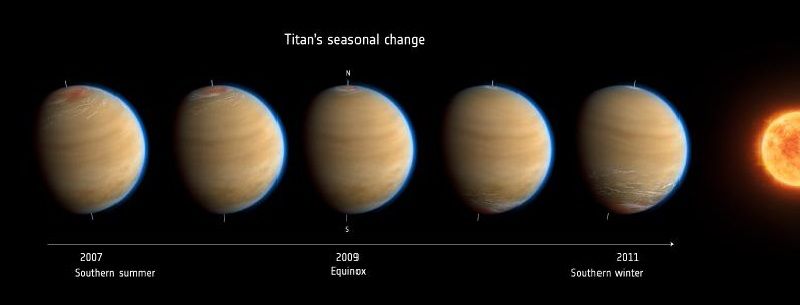Create a free profile to get unlimited access to exclusive videos, sweepstakes, and more!
Even Game of Thrones can’t beat the 22-year winter on Saturn’s moon

No warning from Ned Stark could possibly prepare you for the winter that chills Saturn’s moon Titan, even though it is (we think) safe from the hordes of ice zombies who want nothing better to turn you into one of them — after they kill you first.
Titan is thought to be the one place in the solar system most like Earth, if you can forget for a moment that a toxic rainfall of ethane and methane flows into its rivers and lakes instead of water. Winter also lasts far more than a handful of months, or even several years like the deep freeze on Game of Thrones. New research on Cassini observations has found that Titan’s strange chemistry plunges the moon into 22-year winters not even Wildlings could survive.
Kind of like the warped seasons in a fantasy universe, Titan years are not Earth years. One year on Titan amounts to almost 30 on our planet. That’s a little much even for those used to living beyond The Wall.
“Titan's winter poles are much colder and significantly more enriched in trace gas species than more equatorial latitudes,” said team lead Nick Teanby and his group of scientists, whose study was recently published in Geophysical Research Letters. “These observations can be explained by the presence of winter polar vortices, where sinking air enriches the composition of the lower atmosphere and isolation by strong vortex winds allows enhanced cooling in the winter darkness.”
So let’s back up here. The stratosphere of a planet or moon is where the polar vortex, or that freezing air that covers the poles during winter, happens. Titan and Earth have similar stratospheres. While warmer layers of air float to the top, cooler layers tend to stay close to the surface. Lack of sunlight means both cool in the winter, and the return of sunlight warms both up (depending which hemisphere you’re on), dissipating the polar vortex once winter melts into spring. The thing with Titan is, strange gases keep winter freezing long past what should be its summer solstice.
It’s as if an Earth winter continued all the way into June, except that translates to over two decades on Titan. “Winter is coming” would be even more ominous over there.
Infrared mapping data from Cassini’s 13 years of observations in Saturn’s system has given us an unprecedented complete analysis of seasonal change in Titan’s stratosphere. Winter is an extended period of low pressure hanging over the poles, with frigid westerly jetstreams keeping cold in the vortex and blocking out warm air coming from the equator. The trace gases on Titan only cool it to a greater extreme, and when combined with warming caused by sinking air, divide the moon’s marathon winter into two phases. Titan’s chemistry is now believed to cause an early extra-cold phase of winter.
Those weird gases plunge Titan into even more of a deep freeze by emitting infrared light. While it might sound ironic that light perceptible to human senses as heat would pretty much refrigerate an entire moon, trace gases lose energy that is radiated away from the atmosphere and into space as they glow. It doesn’t help that these gases already sink into the lower and colder layers of Titan’s atmosphere, where they condense into clouds that cause more trace gases to plummet. That’s just the first phase of winter.
At least the second phase isn’t as brutal, with the compression of sinking air warming the stratosphere, not that it matters after that many years of impenetrable cold. The next spacecraft to fly over there better be on the lookout for ice zombies.
(via American Geophysical Union)




























